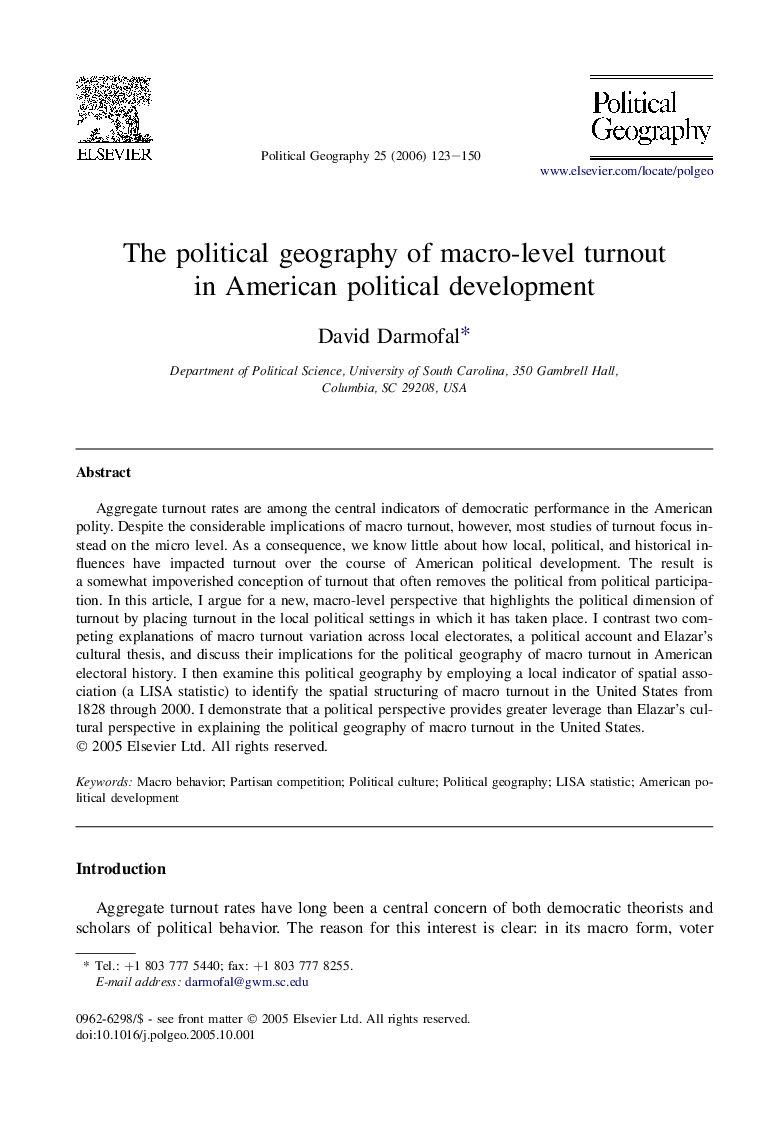| Article ID | Journal | Published Year | Pages | File Type |
|---|---|---|---|---|
| 1062606 | Political Geography | 2006 | 28 Pages |
Aggregate turnout rates are among the central indicators of democratic performance in the American polity. Despite the considerable implications of macro turnout, however, most studies of turnout focus instead on the micro level. As a consequence, we know little about how local, political, and historical influences have impacted turnout over the course of American political development. The result is a somewhat impoverished conception of turnout that often removes the political from political participation. In this article, I argue for a new, macro-level perspective that highlights the political dimension of turnout by placing turnout in the local political settings in which it has taken place. I contrast two competing explanations of macro turnout variation across local electorates, a political account and Elazar's cultural thesis, and discuss their implications for the political geography of macro turnout in American electoral history. I then examine this political geography by employing a local indicator of spatial association (a LISA statistic) to identify the spatial structuring of macro turnout in the United States from 1828 through 2000. I demonstrate that a political perspective provides greater leverage than Elazar's cultural perspective in explaining the political geography of macro turnout in the United States.
